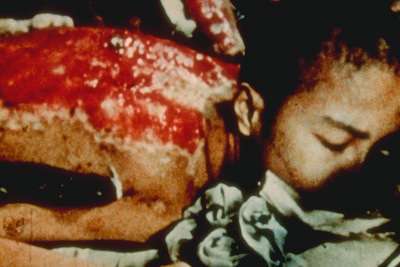Artifact: War's Nightmare Landscape

This horrifying image shows a young boy scarred by the atomic bomb dropped on Nagasaki in August 1945. Almost unbelievably, he would not only survive, but live into the 21st century.
The U.S. military shot miles of color film documenting the effects of atomic bombs on residents of Hiroshima and Nagasaki, then classified the footage as secret and locked it away until the 1980s. On the 60th anniversary of the dropping of the Bomb, the Sundance Channel ran the documentary Original Child Bomb, which brought some of the long-suppressed images to a wide audience for the first time. That same month, in response to legal action taken by the watchdog group the National Security Archive, the Pentagon released several dozen uncensored photos of flag-draped coffins of troops killed in Iraq and Afghanistan and agreed to comply "as expeditiously as possible" with future Freedom of Information Act requests for images of casualties.
If you can stand to search for it in the melted flesh of the boy's back, you may find the reason why all governments try to conceal the human costs of war. Even on those rare occasions when the cause is unambiguously just, such images represent a blurred, nightmare landscape in which easy patriotism disappears.


Show Comments (1)